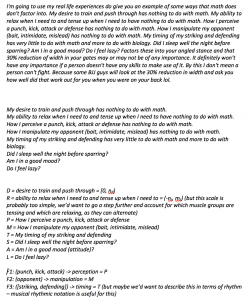- Joined
- Aug 3, 2015
- Messages
- 14,039
- Reaction score
- 5,960
I'm easy going. To be honest, I don't mind the math of things, so long as I don't have to calculate it lol. I've been studying the 45º angle as a "magic number" in martial arts for about 3 or 4 years now. Why 45º? What's so important about 45º? and what happens at 45º. I have discovered some things that I've put to the test and paid a serious price for it because it. One of my theories is that biologically our bodies, and animal bodies, are designed based on the best way to protect our organs. One would have to look at the animals in the world to see the variation of this and the truth of it. Long story short every animal has angle of weakness and 45º angles is where humans are the most weak.We need to hang out some time. Good stuff. I’m out of Austin if you’re ever in town.
Keep in mind the 45º angle is not an exact angle. It's the angle that we try for with the understanding that we won't be exact. But if we try for 45º then we will be within the ball part of the real "magic number" range. So far this only seems to apply to striking I would be interested to know if BJJ has a "magic angle" or if they are just a "bend stuff the wrong way" type system. For example, how do you tap someone out? Answer: Bend it the wrong way.

